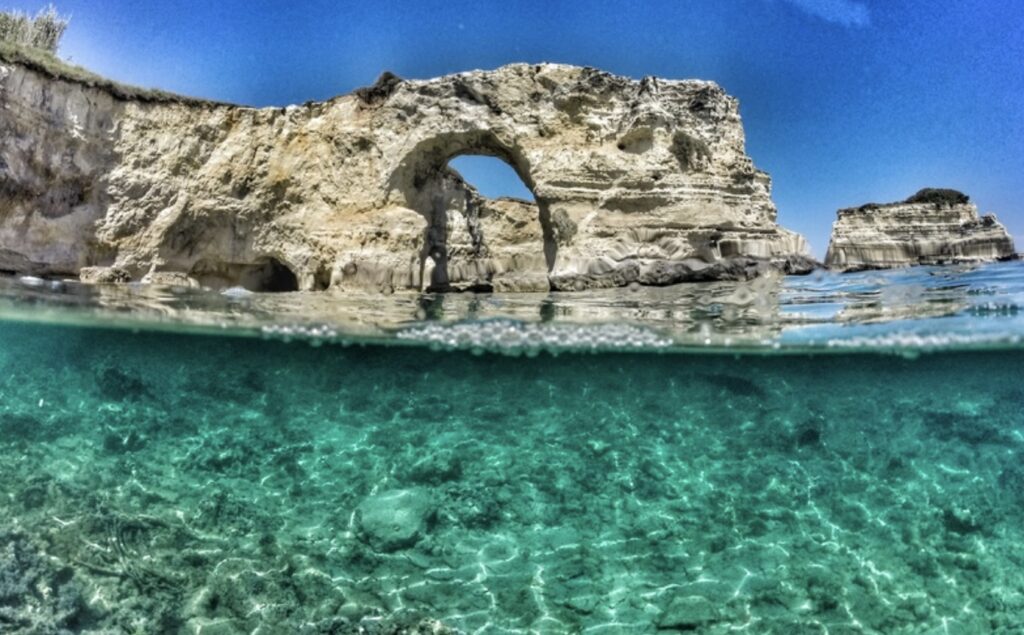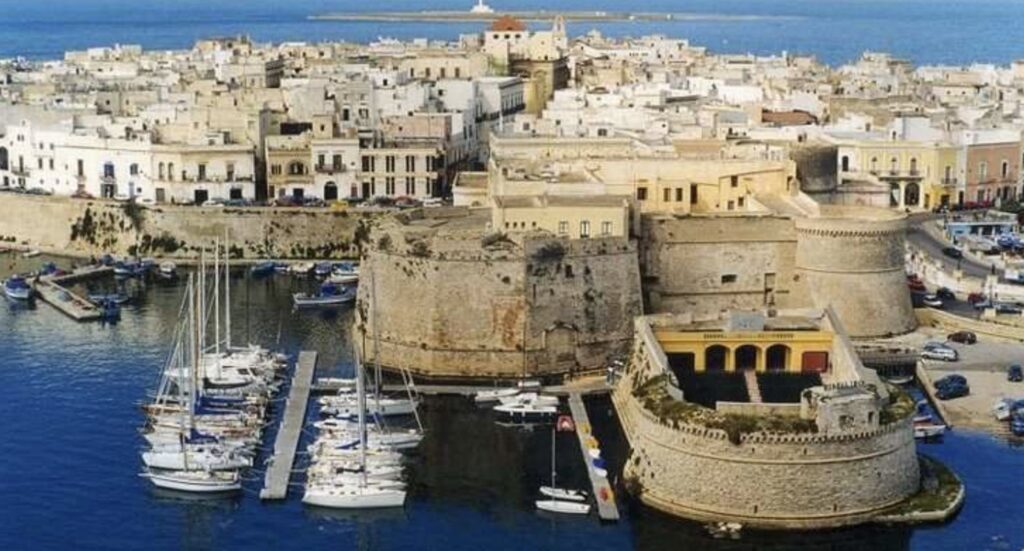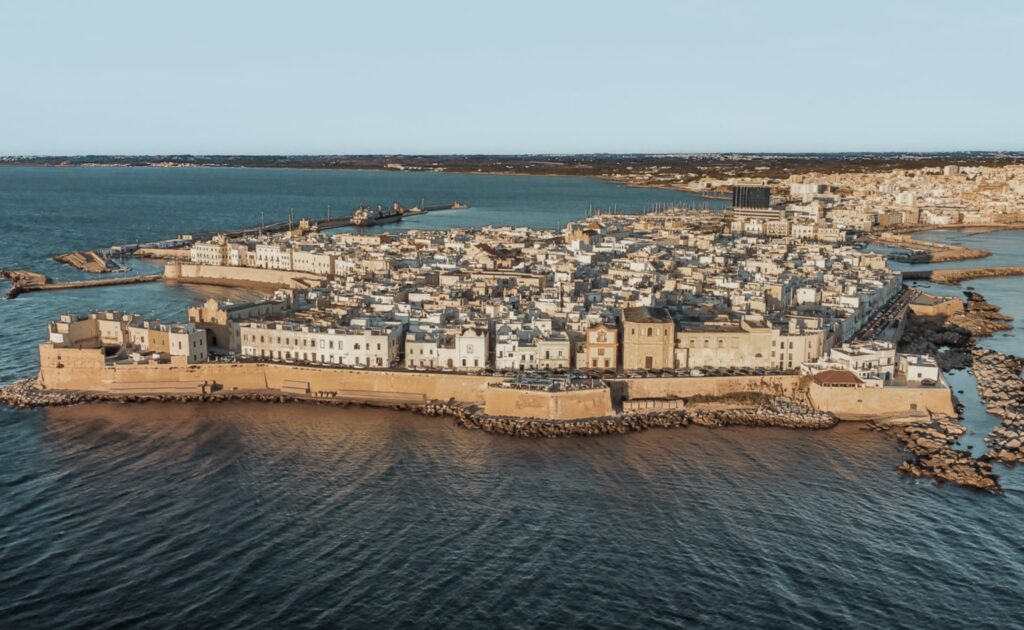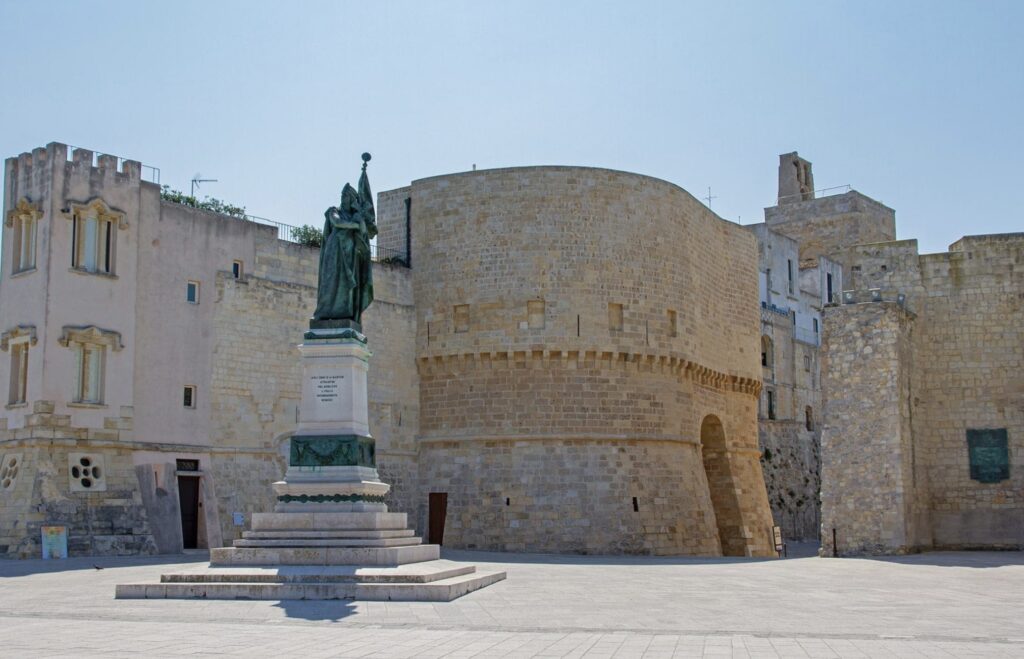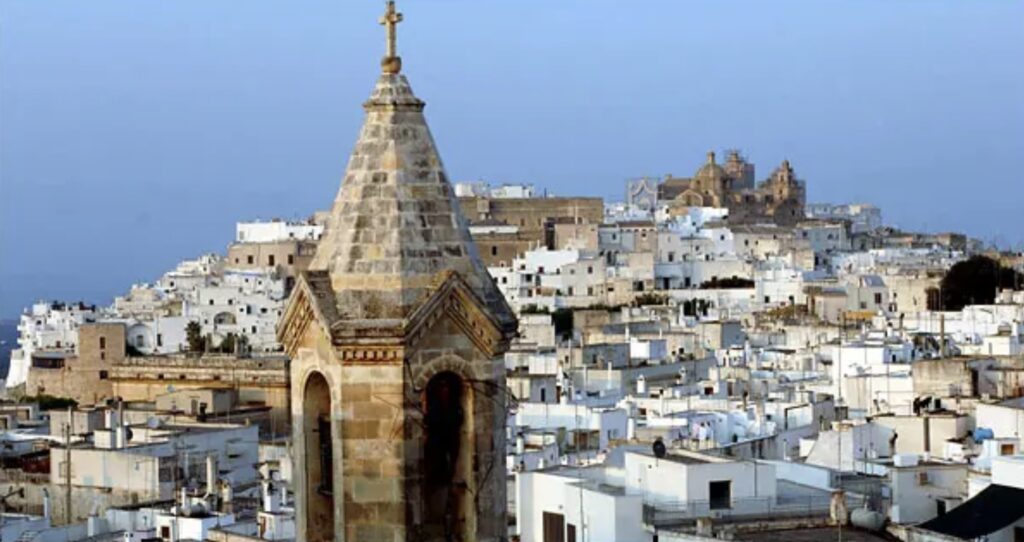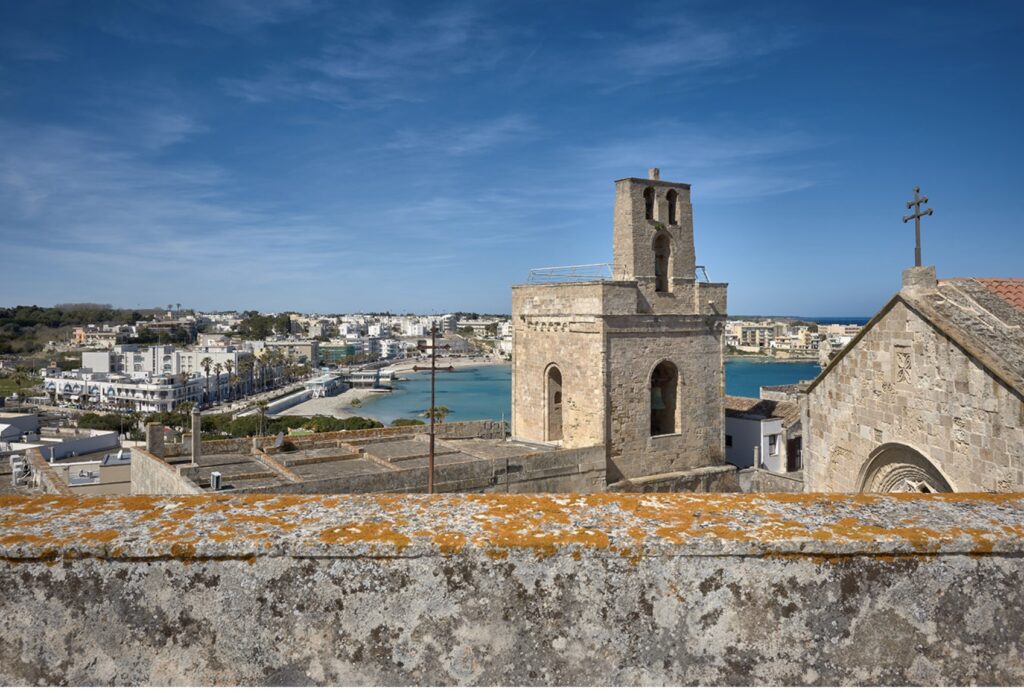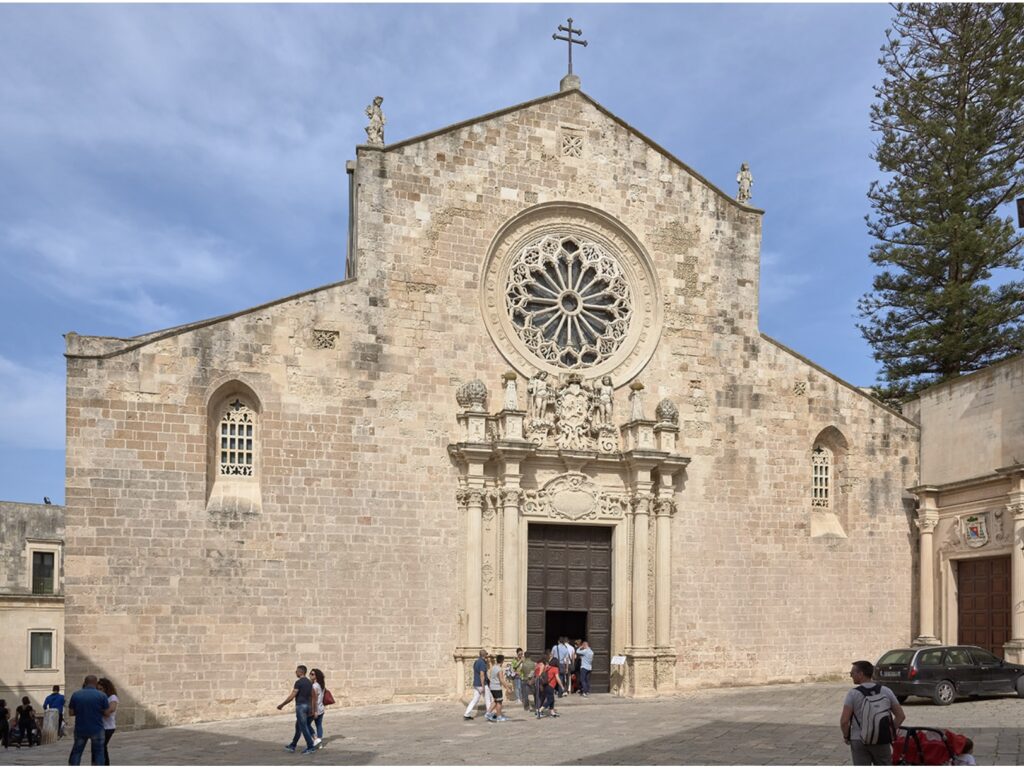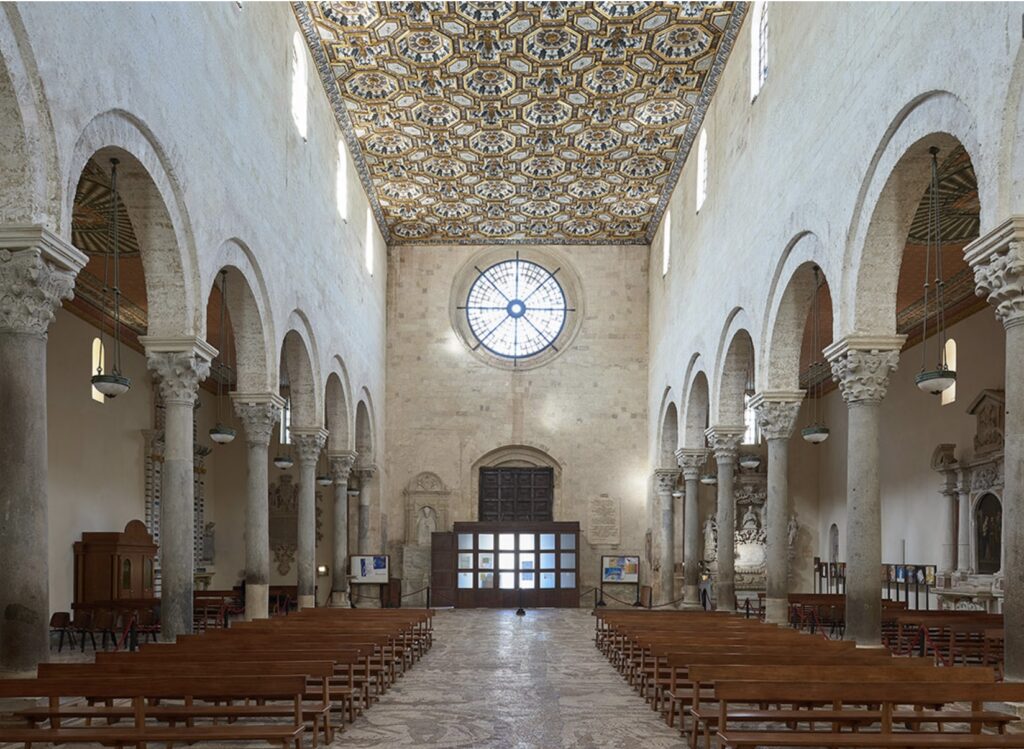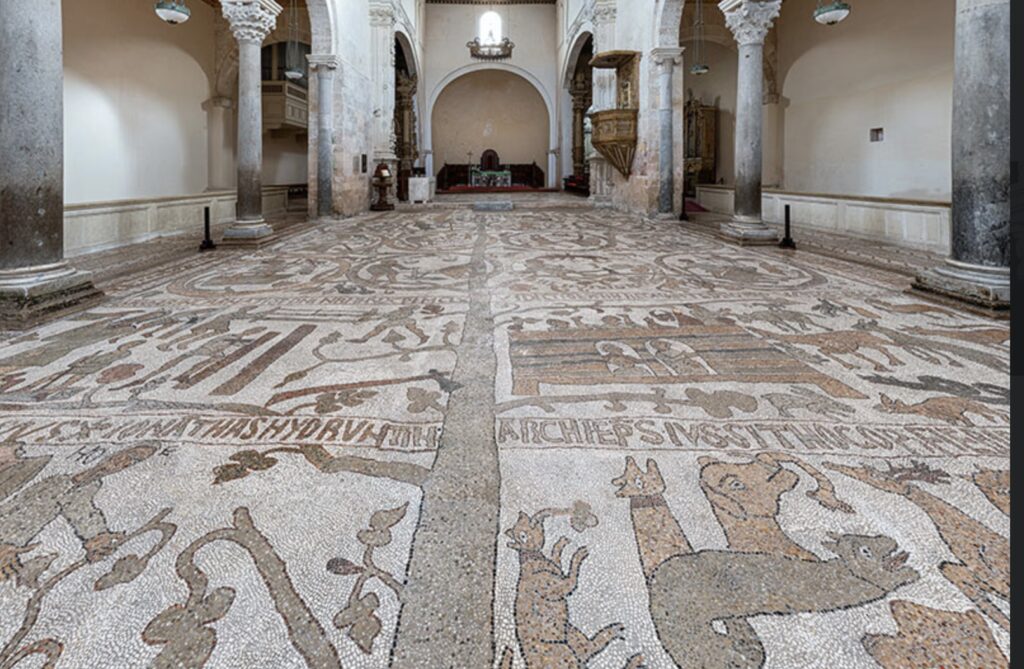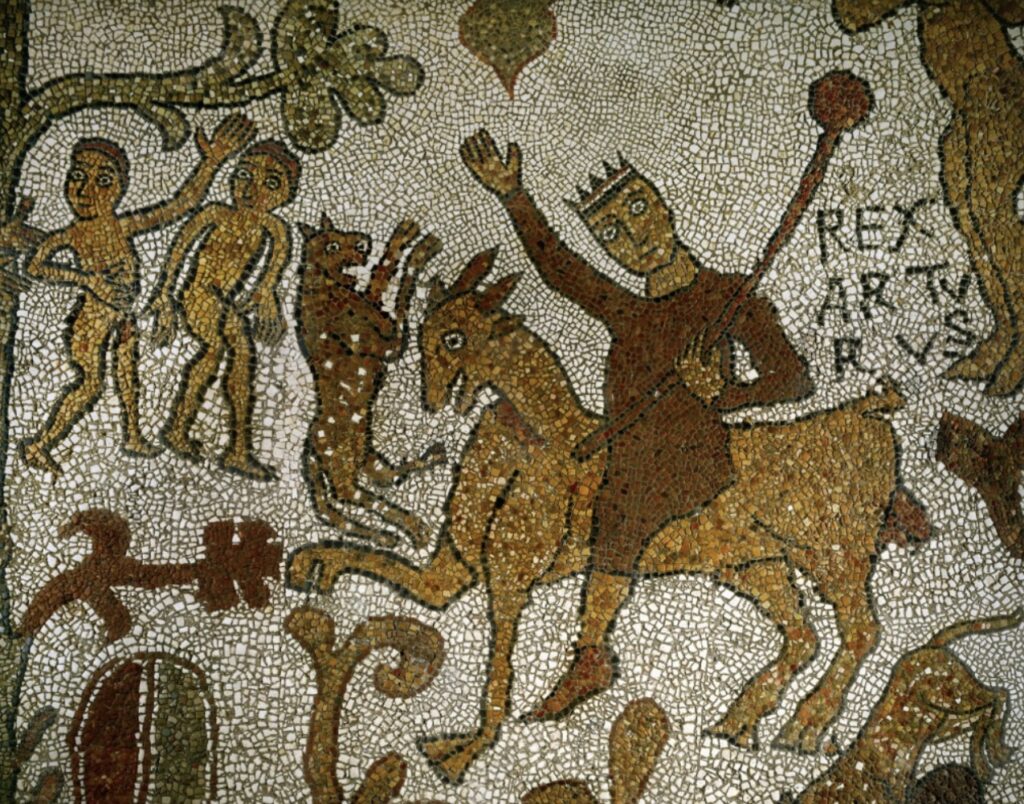ChatGPT:Lecce, located in the southern region of Apulia, Italy, is often referred to as the “Florence of the South” due to its rich Baroque architecture. This historic city is renowned for its stunning churches, such as the Basilica di Santa Croce and the Duomo, as well as its Roman amphitheater. Lecce’s old town is filled with beautifully ornate buildings made from the local Lecce stone, a type of limestone that gives the city its unique golden hue. The city also boasts a vibrant cultural scene, with numerous festivals, delicious local cuisine, and a lively atmosphere.
Lecce’s origins date back over two millennia, with evidence of settlement as early as the 3rd century BC when it was known as Lupiae. The city gained prominence during the Roman era, becoming an important commercial and military center. Under Roman rule, Lecce saw the construction of significant infrastructure, including an amphitheater and a theater, remnants of which can still be seen today.
In the Middle Ages, Lecce experienced periods of decline and resurgence. It was ruled by various powers, including the Byzantines, Lombards, and Normans. The Norman conquest in the 11th century marked a period of relative stability and growth, during which Lecce became part of the Kingdom of Sicily.
The city’s most significant development occurred during the 16th and 17th centuries under Spanish rule. This era, known as the Baroque period, saw a flourishing of art and architecture in Lecce. Wealth from agriculture and trade funded the construction of many of the city’s iconic buildings. The local Lecce stone, easily workable and abundant, was used extensively, giving rise to the distinctive Baroque style that defines the city today.
Lecce continued to develop through the centuries, maintaining its architectural heritage while modernizing its infrastructure. Today, it is a vibrant city that blends its rich history with contemporary Italian culture, making it a popular destination for tourists and a vital cultural hub in the Apulia region.
Lecce’s ability to accumulate the wealth necessary to build its impressive Baroque architecture can be attributed to several key factors:
- Agricultural Prosperity: The region around Lecce has fertile land, which supported prosperous agriculture. The cultivation of olives, grapes, and other crops brought significant wealth to the area.
- Trade and Commerce: Lecce’s strategic location in the Salento peninsula facilitated trade, both inland and across the Mediterranean. The city became a commercial hub, attracting merchants and artisans.
- Political Stability: During the 16th and 17th centuries, Lecce enjoyed relative political stability under Spanish rule. This stability provided a conducive environment for economic growth and cultural development.
- Noble Patronage: The local nobility and wealthy families invested heavily in the construction of churches, palaces, and public buildings. Their patronage was motivated by a desire to demonstrate their power, wealth, and piety.
- Religious Influence: The Catholic Church played a significant role in the development of Baroque architecture in Lecce. The Counter-Reformation movement led to the construction and embellishment of many religious buildings to inspire faith and devotion among the populace.
- Skilled Artisans: The availability of skilled artisans and craftsmen, particularly those adept at working with the local Lecce stone, facilitated the creation of intricate and elaborate architectural designs.
- Lecce Stone: The local limestone, known as Lecce stone, is relatively soft and easy to carve when first extracted but hardens upon exposure to the air. This made it an ideal material for the detailed and ornate Baroque style.
These factors combined to create the economic and cultural conditions necessary for the extensive and impressive Baroque architecture that characterizes Lecce today.
Baroque architecture in Lecce is distinguished by several key features:
- Ornate Facades: Buildings in Lecce have highly decorative and intricate facades, often featuring elaborate sculptures and carvings.
- Use of Lecce Stone: This local limestone is soft and easy to work with, allowing for detailed and intricate designs. Its golden hue adds a distinctive look to the architecture.
- Dynamic Forms: Baroque architecture in Lecce often includes curves, spirals, and complex shapes, creating a sense of movement and drama.
- Rich Decorations: Many buildings are adorned with statues, reliefs, and ornamental details, often depicting religious themes, flora, and fauna.
- Grand Entrances: Large, imposing doorways and entrances, often framed by columns or pilasters, are common features.
- Decorative Columns and Pilasters: These elements are frequently used to add vertical emphasis and to frame windows, doors, and facades.
- Balconies and Balustrades: Many buildings feature balconies with ornate balustrades, adding to the layered and textured appearance.
- Intricate Cornices and Friezes: The upper edges of buildings are often adorned with detailed cornices and friezes, enhancing the visual complexity.
- Church Interiors: Baroque churches in Lecce typically have richly decorated interiors with frescoes, gilded altars, and elaborate stuccoes.
- Contrast and Light: The design often plays with contrasts of light and shadow, using deeply recessed windows and doors to create dramatic effects.
These features combine to give Lecce’s Baroque architecture its distinctive, exuberant character.
Lecce is home to numerous historical monuments and tourist attractions, including:
- Basilica di Santa Croce: A stunning example of Baroque architecture, known for its elaborate facade and detailed sculptures.
- Lecce Cathedral (Duomo di Lecce): Located in Piazza del Duomo, this cathedral features a mix of architectural styles, with a particularly impressive Baroque interior.
- Roman Amphitheater: An ancient structure in the heart of the city, dating back to the 2nd century AD, partially excavated and often used for events.
- Piazza Sant’Oronzo: The main square of Lecce, featuring the Column of Sant’Oronzo and a mix of historic and modern buildings.
- Church of San Matteo: Notable for its convex and concave facade, a beautiful example of Baroque architecture.
- Castle of Charles V (Castello di Carlo V): A 16th-century fortress built under the reign of Charles V, now used for exhibitions and cultural events.
- Porta Napoli: A triumphal arch built in 1548 to honor Charles V, marking the entrance to the historic center.
- Church of Santa Chiara: Another fine example of Baroque architecture, known for its intricate stucco work.
- Church of Saints Niccolò and Cataldo: A beautiful church founded in the 12th century, combining Norman and Baroque elements.
- Palazzo dei Celestini: A former monastery and now the seat of the Province of Lecce, featuring a grand Baroque facade.
- Teatro Romano: An ancient Roman theater, smaller than the amphitheater but well-preserved and often used for performances.
- Museo Faggiano: A fascinating museum housed in a historical building, showcasing archaeological finds from different periods of Lecce’s history.
- Palazzo del Seminario: Located in Piazza Duomo, this 17th-century building features a beautiful facade and an elegant courtyard.
- Chiesa di Sant’Irene: A large Baroque church dedicated to Saint Irene, the patron saint of Lecce until the 17th century.
- Lecce’s Old Town: The historic center is a maze of narrow streets and alleys, filled with Baroque buildings, artisan shops, cafes, and restaurants, perfect for leisurely exploration.
These sites highlight Lecce’s rich historical and architectural heritage, making it a captivating destination for visitors.
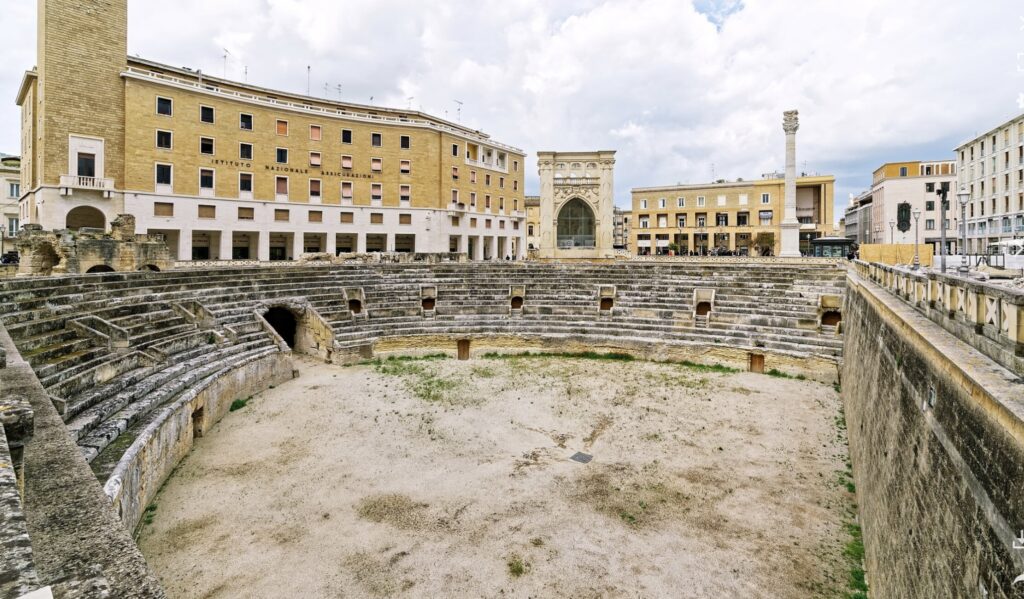

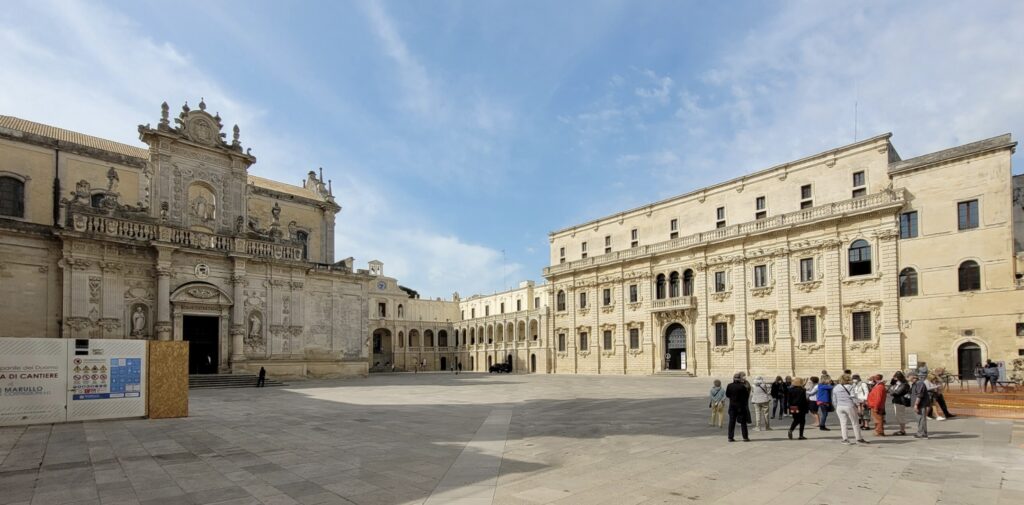
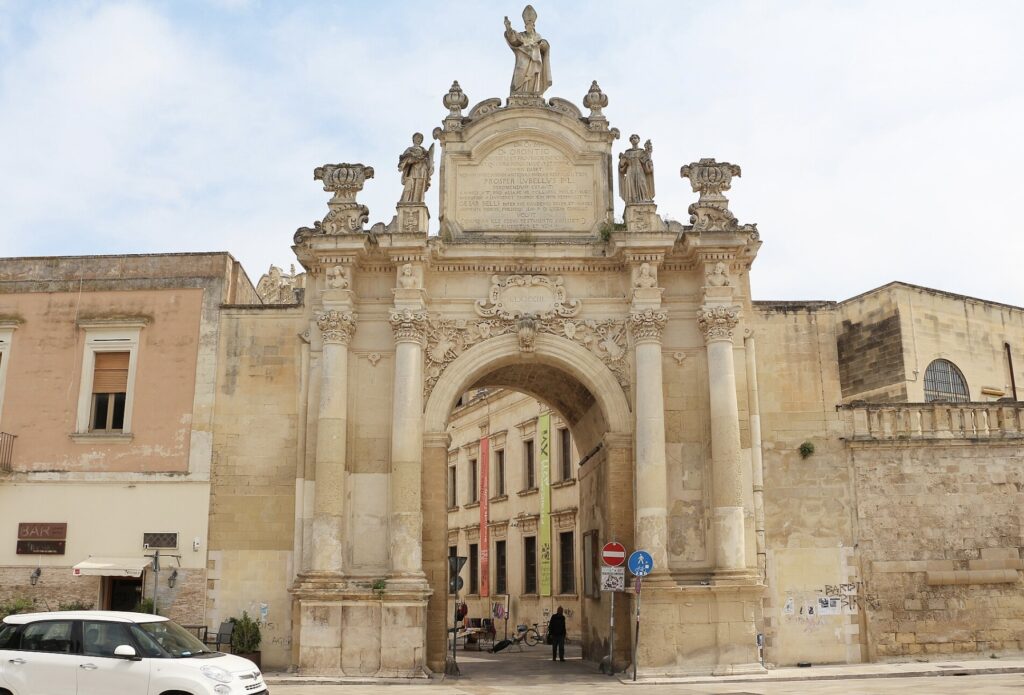
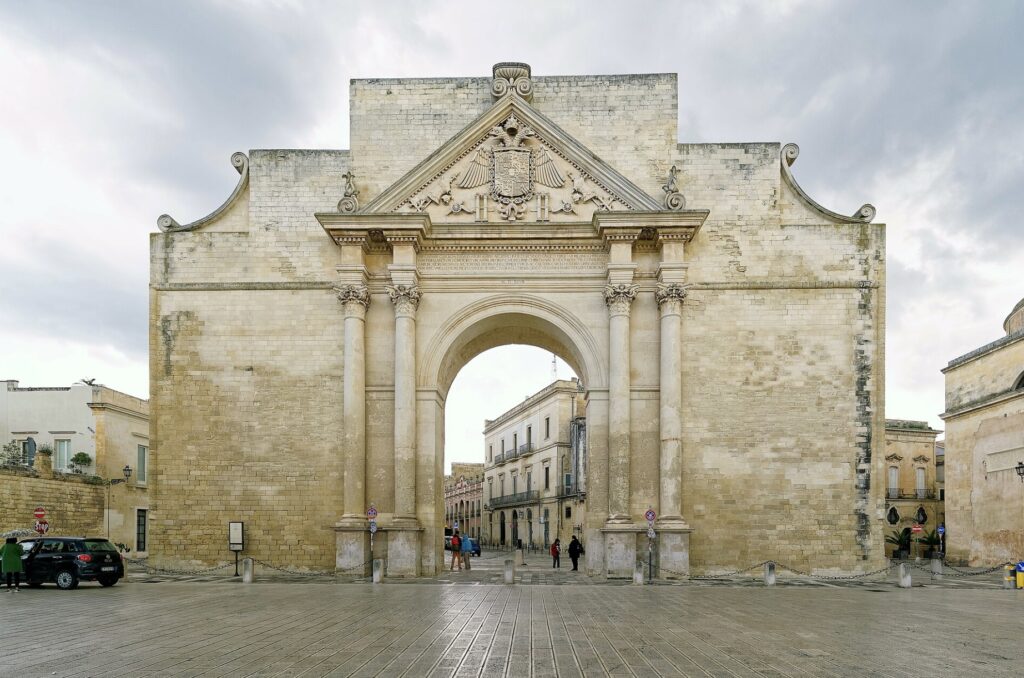
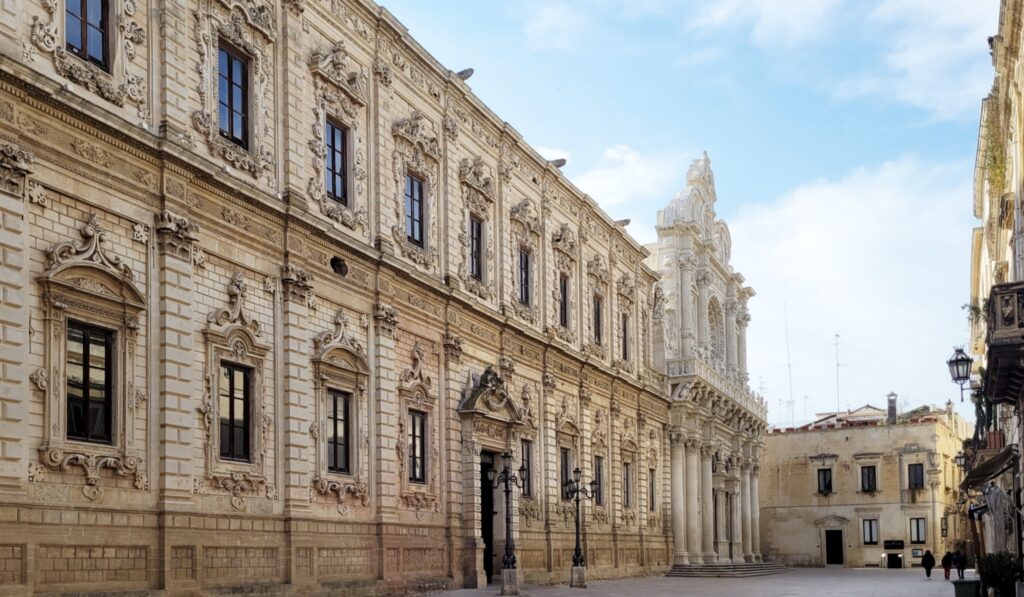
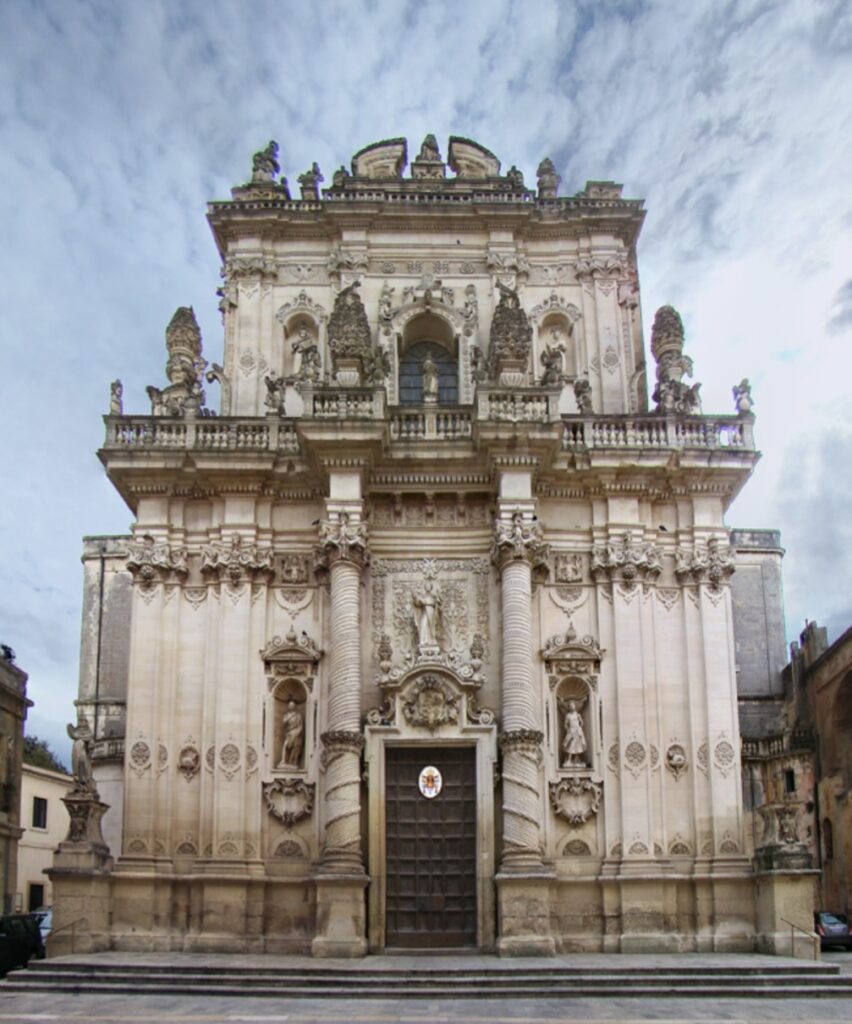

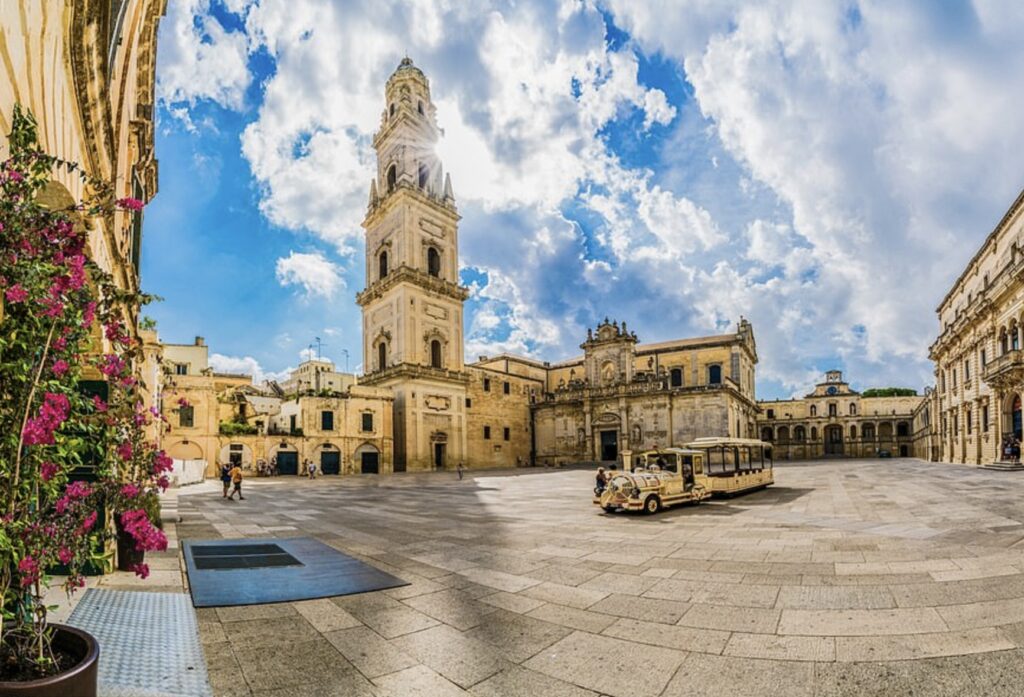

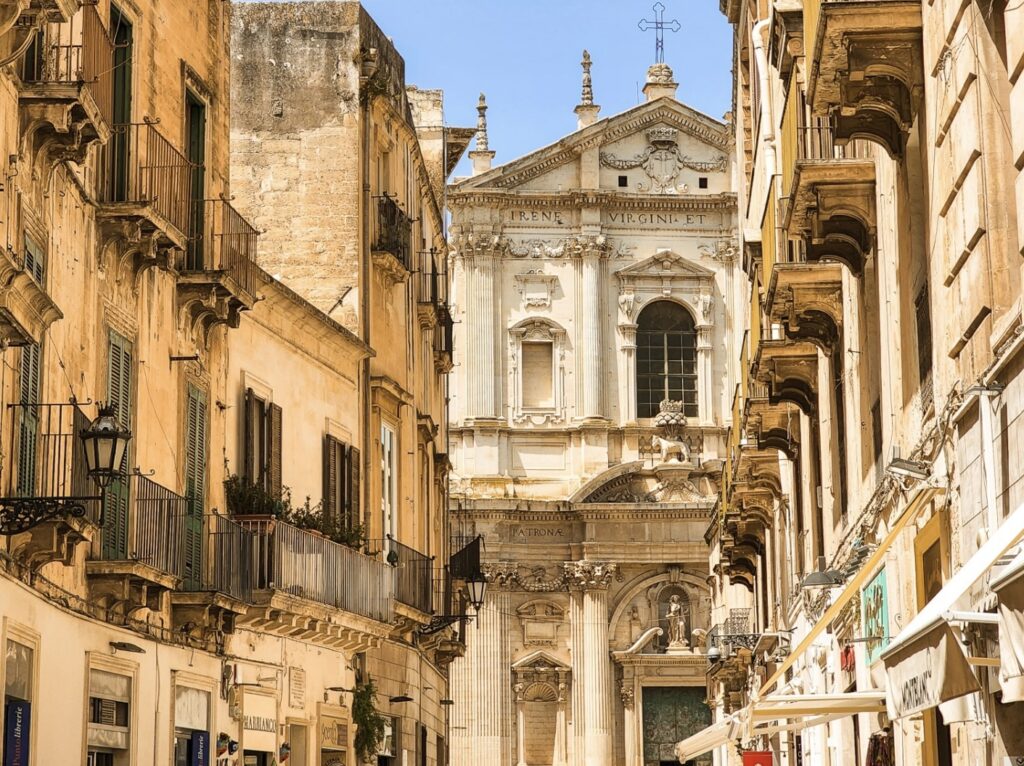
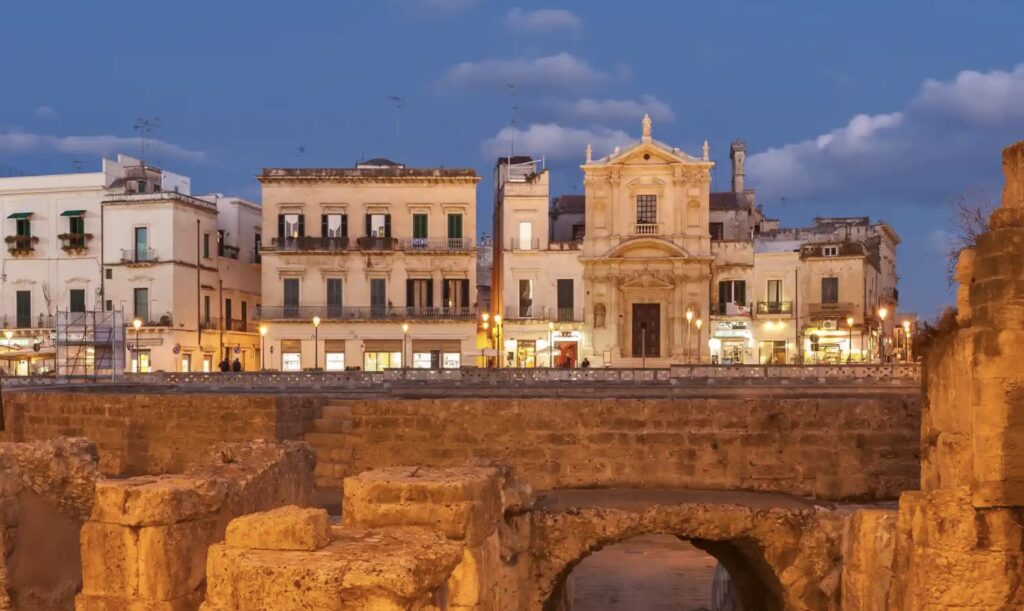
ChatGPT:Lecce offers several delicious local food specialties that reflect its rich culinary heritage. Some notable ones include:
Puccia: A traditional sandwich made with a type of local bread, typically filled with a variety of ingredients such as cured meats, cheeses, vegetables, and sometimes even seafood.
Pasticciotto: A popular pastry originating from Lecce, it is a small, oval-shaped cake filled with custard cream, often enjoyed for breakfast or as a dessert.
Rustico Leccese: A savory pastry made with puff pastry dough, filled with béchamel sauce, mozzarella, tomato, and a hint of pepper, then baked to golden perfection.
Orecchiette: A type of pasta shaped like small ears, often served with a rich tomato sauce, turnip greens (cime di rapa), or meat ragù.
Fava e Cicorie: A traditional dish made with pureed fava beans and wild chicory, drizzled with olive oil, and sometimes accompanied by bread or vegetables.
Frisella: A type of dried bread, often soaked in water to soften it before being topped with tomatoes, olive oil, oregano, and sometimes olives or cheese.
Taralli: Crunchy, ring-shaped snacks made from dough, typically flavored with fennel seeds, black pepper, or other spices.
Scapece Gallipolina: A seafood specialty from the nearby town of Gallipoli, consisting of small fish marinated in vinegar and saffron, often served as an appetizer.
Sagne ‘ncannulate: A type of twisted pasta, usually served with a simple tomato sauce and ricotta cheese.
Negroamaro and Primitivo Wines: Lecce is part of the Salento wine region, known for producing robust red wines like Negroamaro and Primitivo, which pair well with the local cuisine.
These specialties highlight the region’s use of fresh, local ingredients and traditional cooking methods, offering a taste of Lecce’s unique culinary identity.
Here’s a two-day itinerary for visiting Lecce and its surrounding areas:
Day 1: Exploring Lecce
Morning:
- Piazza Sant’Oronzo: Start your day in the main square, visiting the Column of Sant’Oronzo and the Roman Amphitheater.
- Basilica di Santa Croce: Walk to this stunning Baroque church and admire its intricate facade and beautiful interior.
Mid-Morning:
- Piazza del Duomo: Head to this picturesque square to visit the Lecce Cathedral (Duomo di Lecce) and the Palazzo del Seminario.
- Teatro Romano: Explore the remains of the Roman theater nearby.
Lunch:
- Local Restaurant: Enjoy lunch at a traditional restaurant, trying local specialties such as Puccia or Rustico Leccese.
Afternoon:
- Castle of Charles V (Castello di Carlo V): Visit this 16th-century fortress and explore its exhibitions.
- Church of Santa Chiara: Stop by this beautiful Baroque church with its intricate stucco work.
- Wander Lecce’s Old Town: Spend the afternoon exploring the narrow streets, artisan shops, and cafes of the historic center.
Evening:
- Dinner: Enjoy a meal at a local trattoria, savoring dishes like Orecchiette or Fava e Cicorie.
- Evening Stroll: Take a leisurely evening stroll through the illuminated streets and squares.
Day 2: Surrounding Areas
Morning:
- Gallipoli: Drive to the coastal town of Gallipoli (about 30 minutes from Lecce). Explore the old town, visit the Gallipoli Castle, and stroll along the seaside promenade.
- Scapece Gallipolina: Try this local seafood specialty for a mid-morning snack.
Lunch:
- Seaside Restaurant: Enjoy fresh seafood for lunch at a restaurant overlooking the sea.
Afternoon:
- Otranto: Head to Otranto (about an hour from Gallipoli), known for its stunning coastline and historical sites. Visit the Otranto Cathedral with its famous mosaic floor and the Aragonese Castle.
- Porta Napoli: On your return to Lecce, stop by this triumphal arch marking the entrance to the historic center.
Evening:
- Return to Lecce: Arrive back in Lecce and relax at a local café or wine bar.
- Dinner: Enjoy your final dinner in Lecce, perhaps trying some local wines like Negroamaro or Primitivo paired with traditional dishes.
- Gelato: End your evening with a delicious gelato from a local gelateria.
This itinerary offers a mix of historical exploration, cultural experiences, and culinary delights, providing a comprehensive taste of Lecce and its surroundings.
